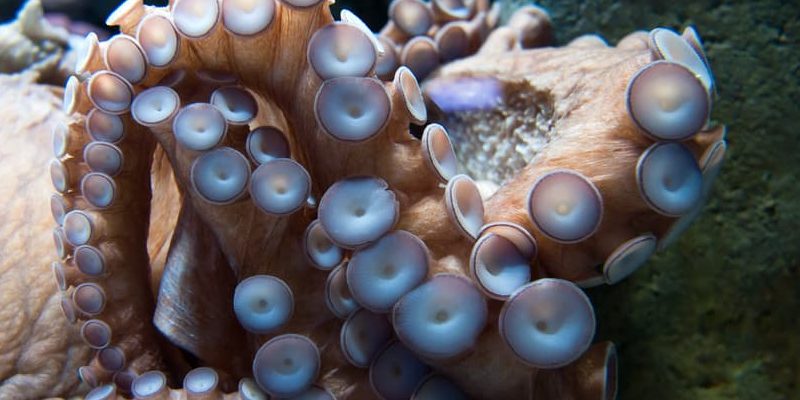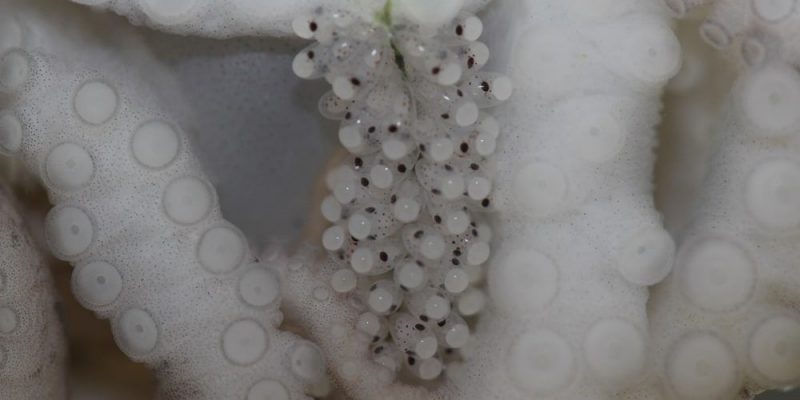We explain what the octopus is, its habitat, feeding, reproduction and other characteristics. Also, how long they live.

What is an octopus?
An entire order is known by the name of octopus (octopoda) of underwater cephalopod mollusks, that is, to a set of soft-bodied animals, equipped with eight agile limbs with suction cups on the inside. It is one of the most intelligent and behaviorally diverse invertebrates known in the entire world.
With its ductile body and its ability to change colors and simulate textures, the octopus is one of the marine animals that has most fascinated humans since ancient times. It is an animal known throughout the world, part of numerous gastronomic traditions, such as the Mediterranean or Asian, and which appears in maritime representations of antiquity, often in gigantic and terrible dimensions (the kraken).
The oldest octopus fossils ever found date back to the Carboniferous, around 300 million years ago, and are distinguished from some close relatives, such as the extinct ammonites, in that they lack a calcareous shell. Currently, within the order octopoda About 300 known species are classified divided into two suborders:
- Incirrin: Species that lack swimming fins.
- Cirrina: Species that lack suction cups on their appendages.
Characteristics of octopuses

Octopuses, in general, are characterized by the following:
- These are mollusks without shells that is, with a soft and ductile body, capable of elongating, contracting and even slipping through tiny spaces.
- Their bodies have bilateral symmetry and they are composed of a head, where the eyes, gills and the siphon that allows breathing and rapid movement are located, as well as a mouth in the shape of a rigid beak, around which there are eight appendages: six “arms” and two “feet”. The inner surface of these appendages is usually covered with circular suction cups.
- in your body has an ink tank which many species can expel as a defense mechanism, promoting rapid escape.
- Another fundamental feature is that Your skin has numerous pigment cells which allow abrupt and sudden changes in color, being able to camouflage itself in the environment almost perfectly.
- The eyes of the octopus are among the most developed among all invertebrates, as well as a closed circulatory system, with three hearts and a complex nervous system that goes beyond the brain, as it has neurons in the animal's own appendages.
- These are intelligent animals capable of solving simple problems and planning hunting strategies, given that their habits are essentially predatory. At the same time, octopus is part of the food of many larger predators, such as certain types of sharks.
- are solitary animals which socialize little or nothing outside of reproduction and never form colonies.
Where do octopuses live?

The octopuses are present in all oceans adapted to their environment in a multiplicity of different species. They usually make their den in crevices, outcrops or simple underwater mud. They are not particularly territorial animals, although they tend to stay in a specific area, leaving it only to go eat.
What do octopuses eat?

The octopuses are essentially predators, and their favorite prey are small crustaceans, fish, worms and other mollusks or crabs. It is possible that some species supplement their diet with algae and similar vegetables, but it is very rare. Normally, they use their wonderful vision and camouflage strategies to ambush their prey, which they then calmly devour in their lair.
How do octopuses reproduce?

Octopus reproduction has been little studied. It is known that it occurs in sexual terms and promiscuously: males, smaller in size than females, have an arm adapted with reproductive functions, with which they deposit their spermatophores inside, structures that will later release the sperm.
The female can then store the male's cells to later fertilize the eggs as you deposit them. From these eggs, tiny offspring known as paralarvae emerge, after their mother cares for them and keeps them clean for a variable period of time, which can reach 10 months.
Mothers do not usually feed during this period, so that at the end they are often too weak to continue with their lives, resulting in their death in the few weeks following. Males also experience rapid senescence after reproduction and die shortly thereafter.
How long do octopuses live?
The life expectancy of the average octopus is short. Some small species can last only 6 months of life while the giant North Pacific octopus is capable of living around 5 years. However, playback always marks the end point of the lives of individuals of the species: males die shortly after mating and females shortly after their eggs hatch.
Continue with: Turtle
References
- “Octopoda” on Wikipedia.
- “Octopuses” in National Geographic.
- “Octopuses: gentle intelligence” (video) in Coruñeses Scientific Museums (Spain).
- “Octopus (mollusk order)” in The Encyclopaedia Britannica.





